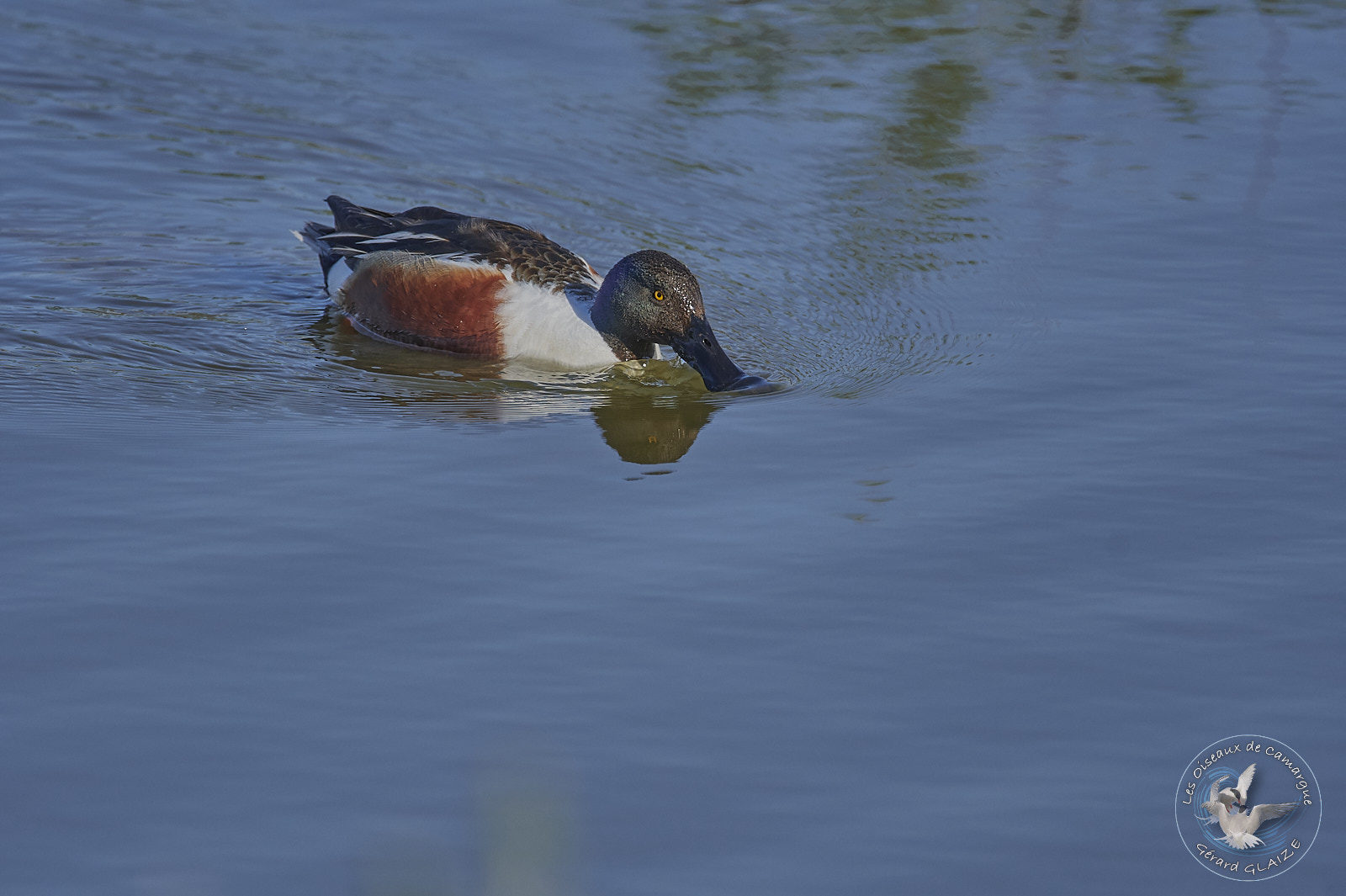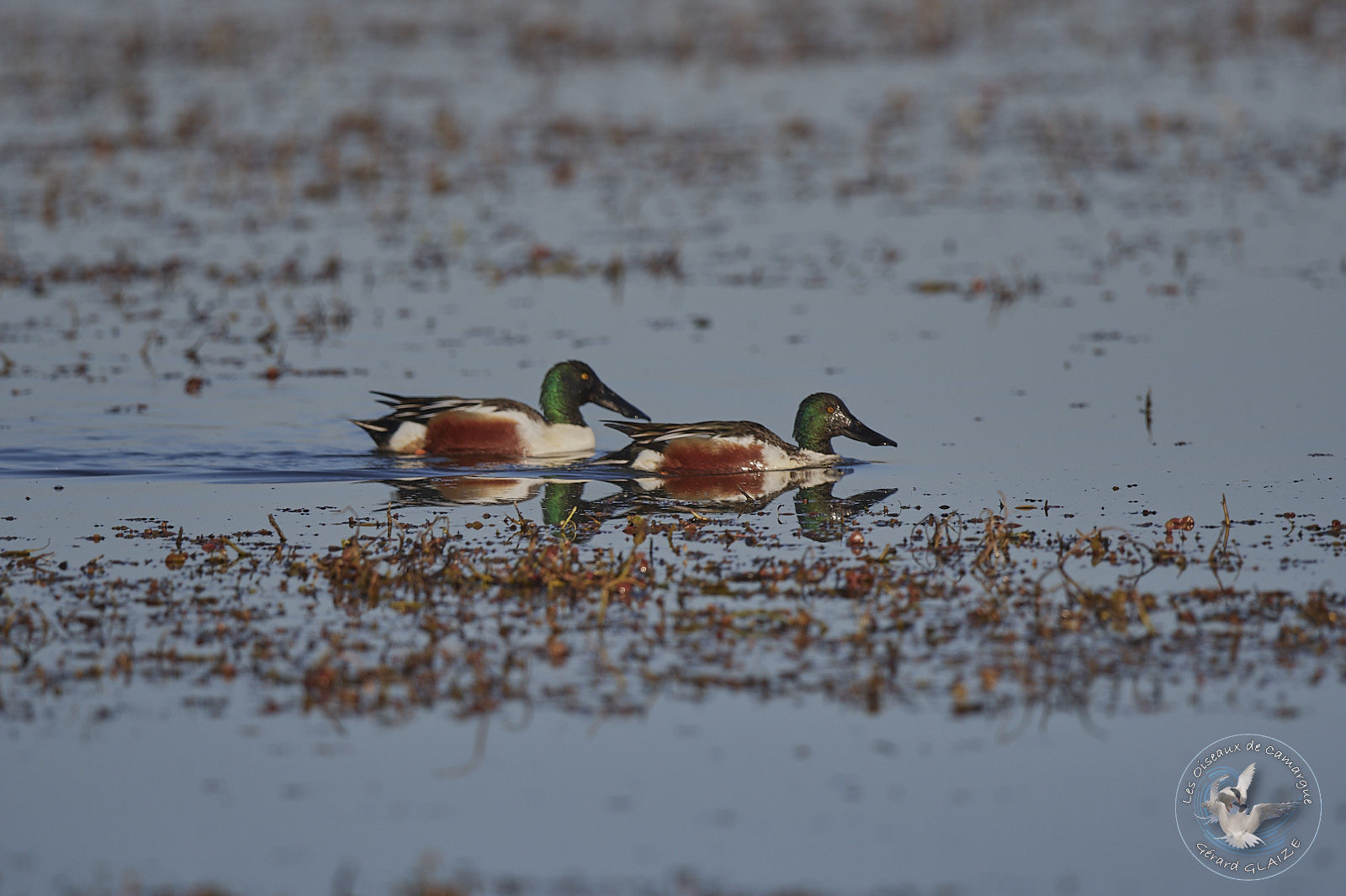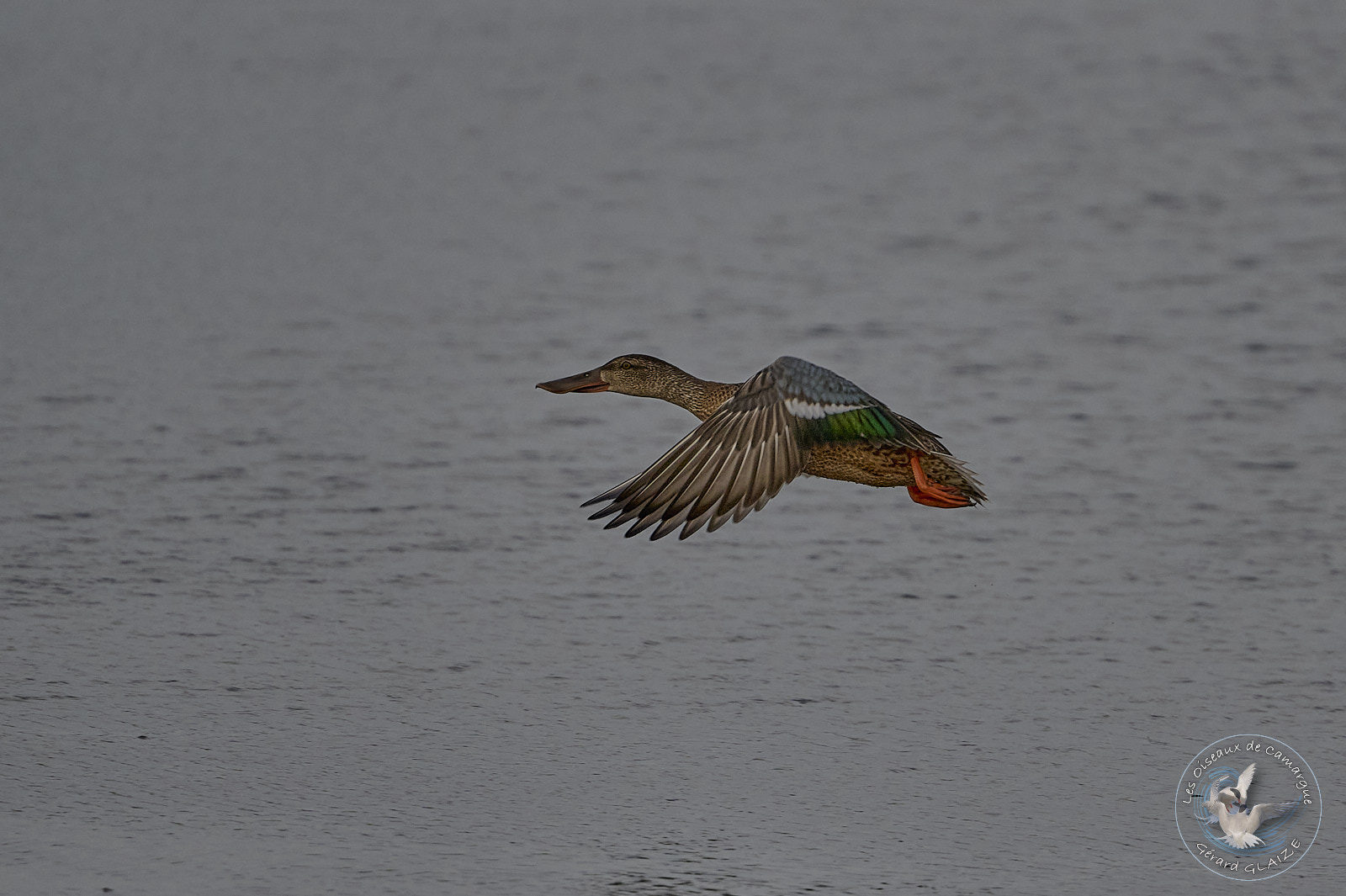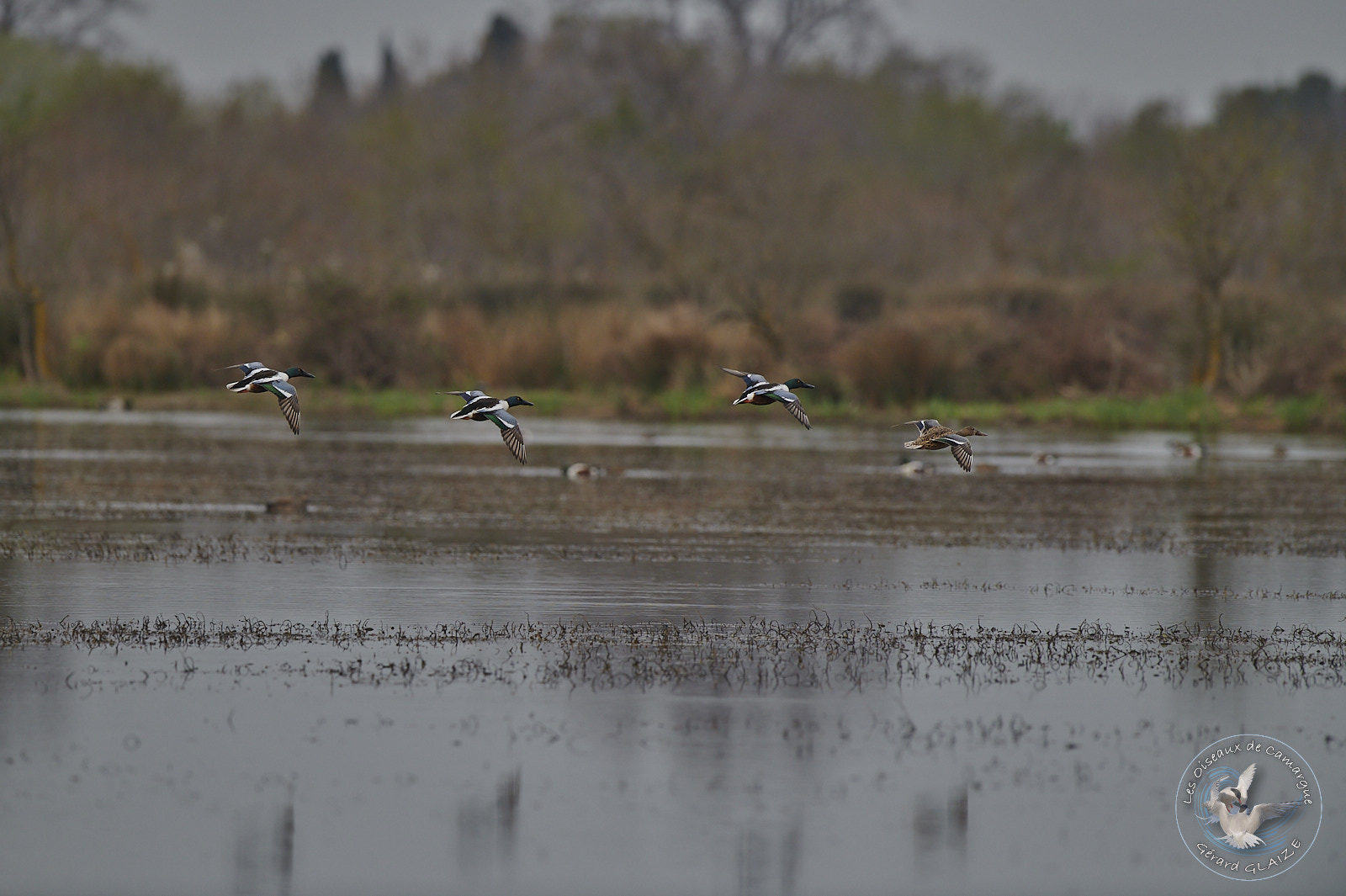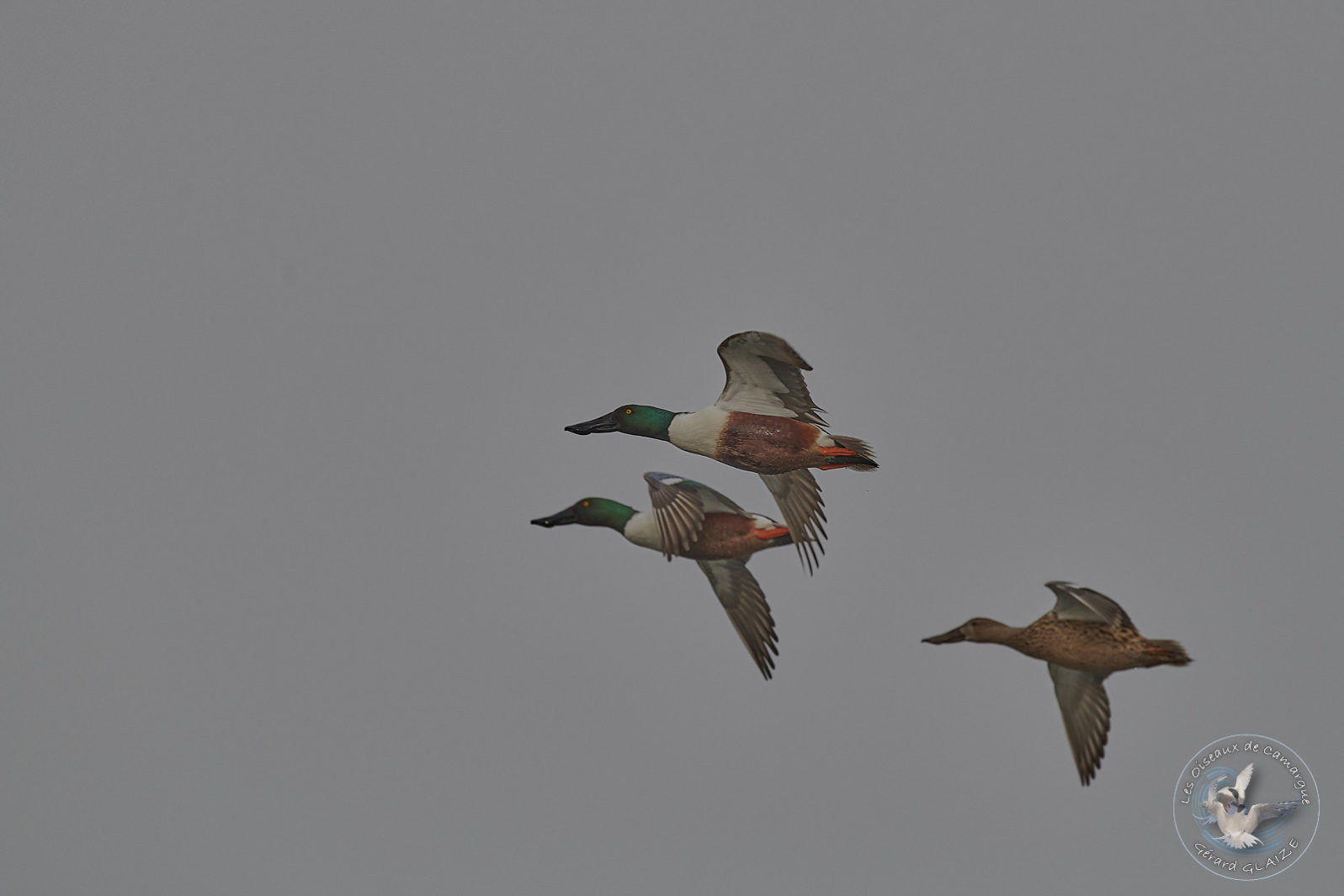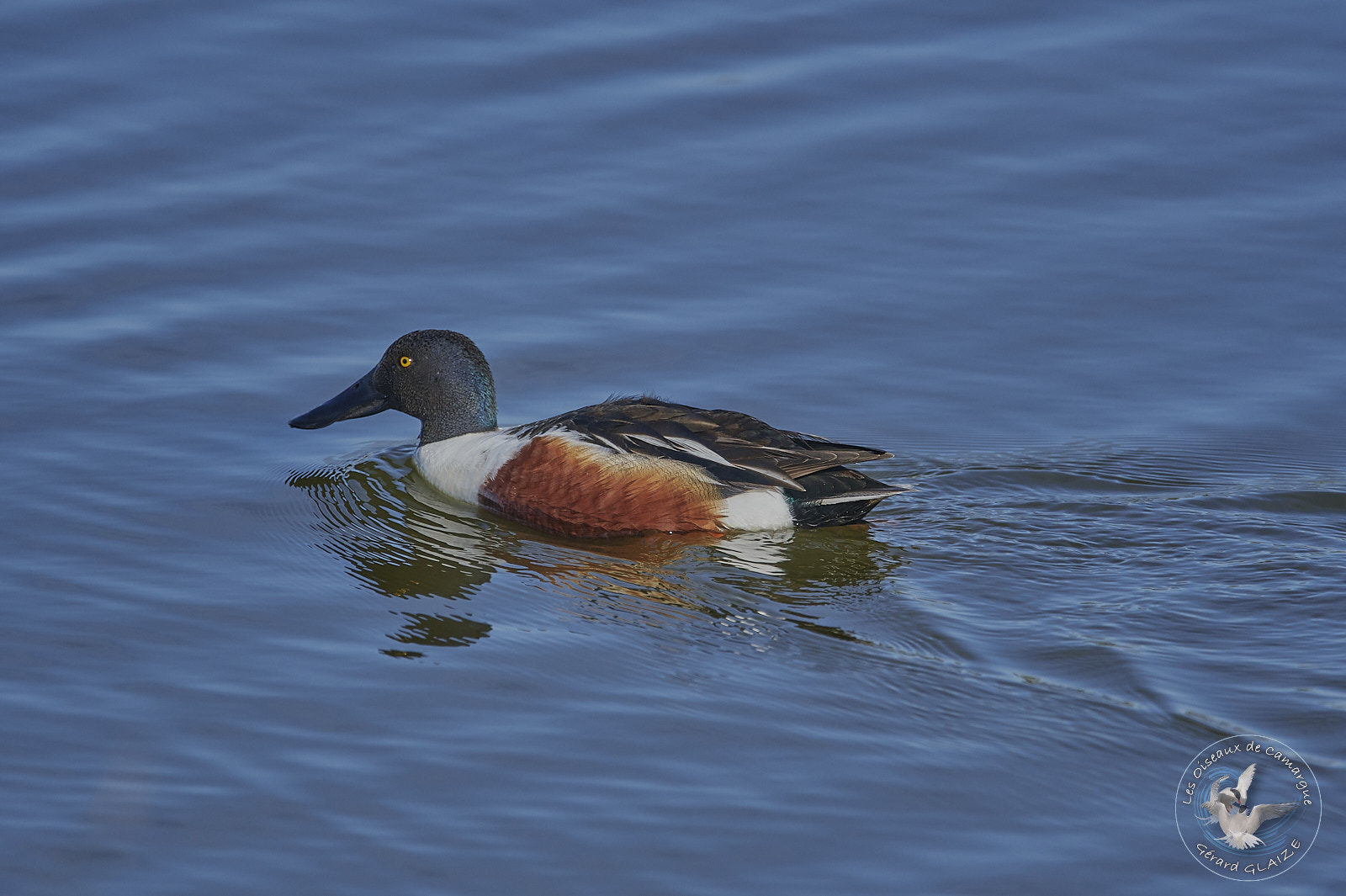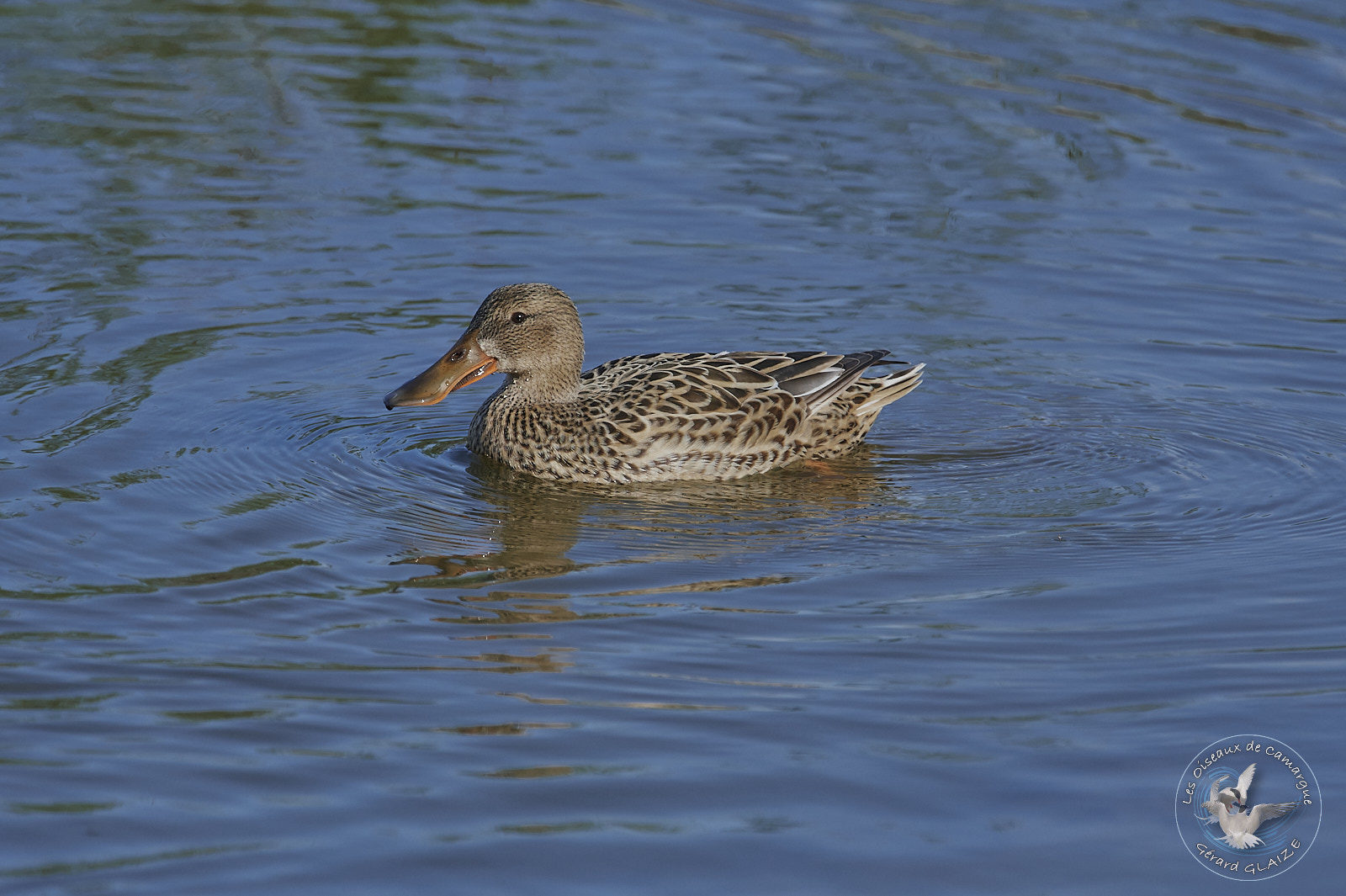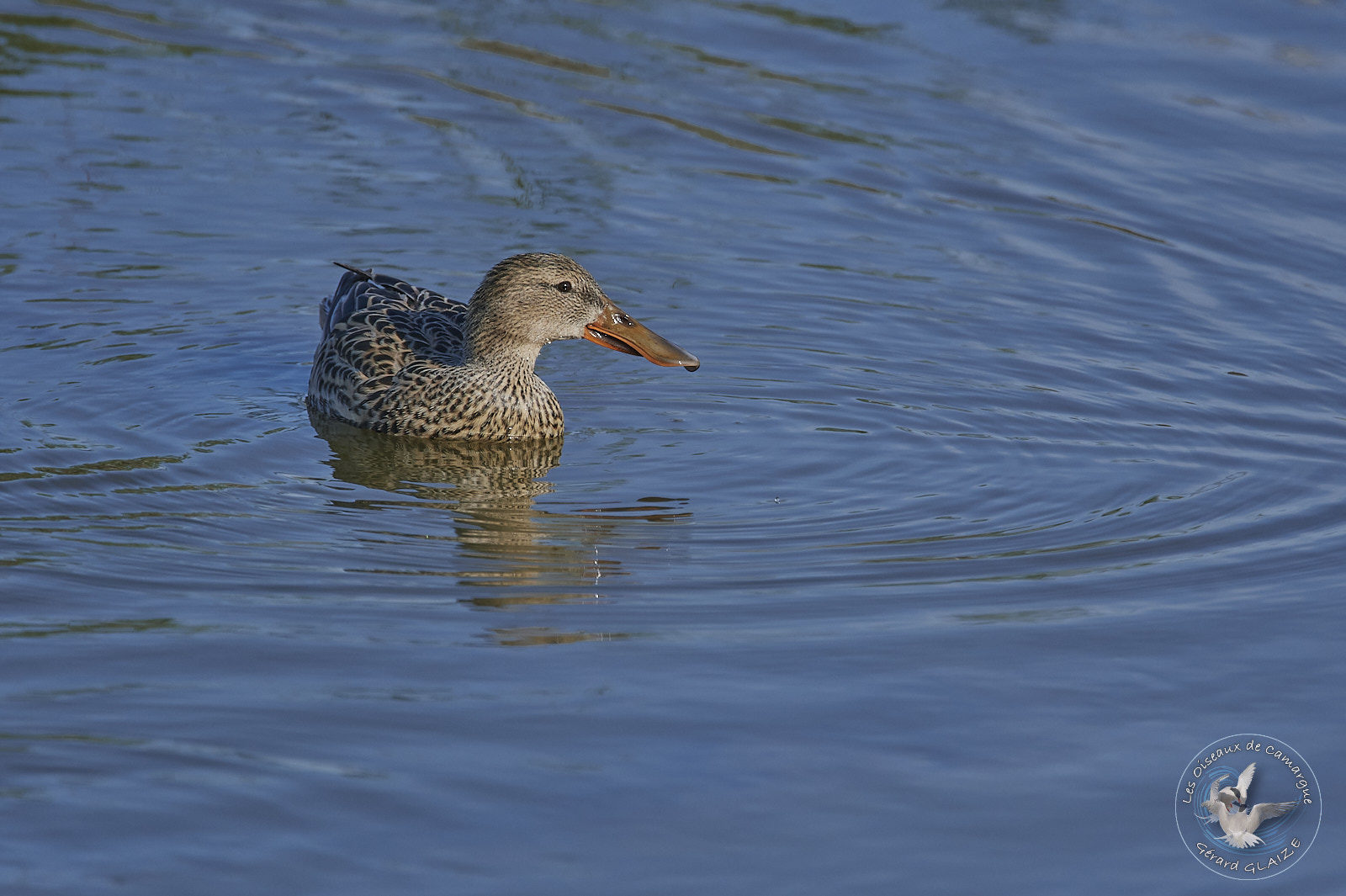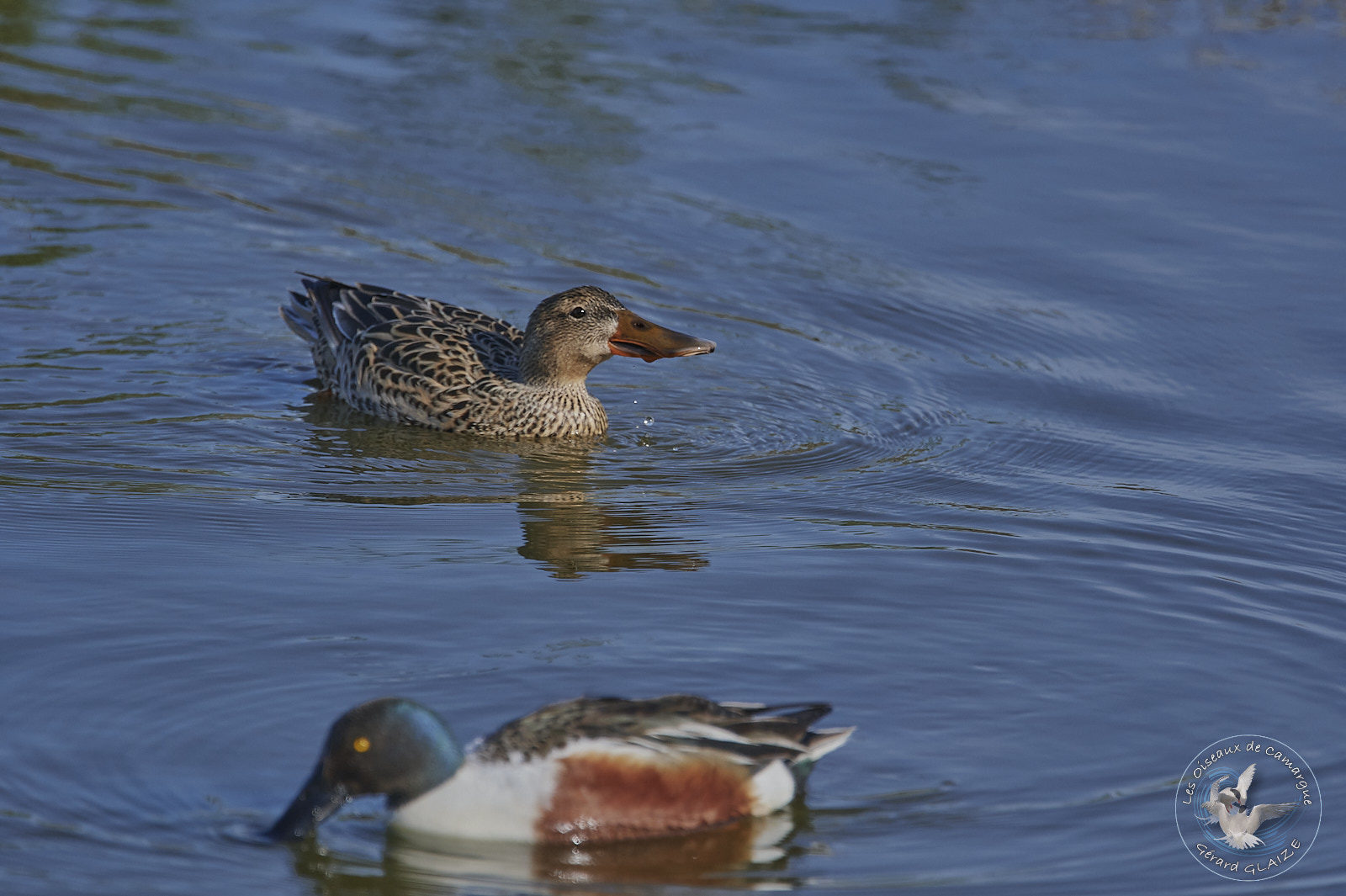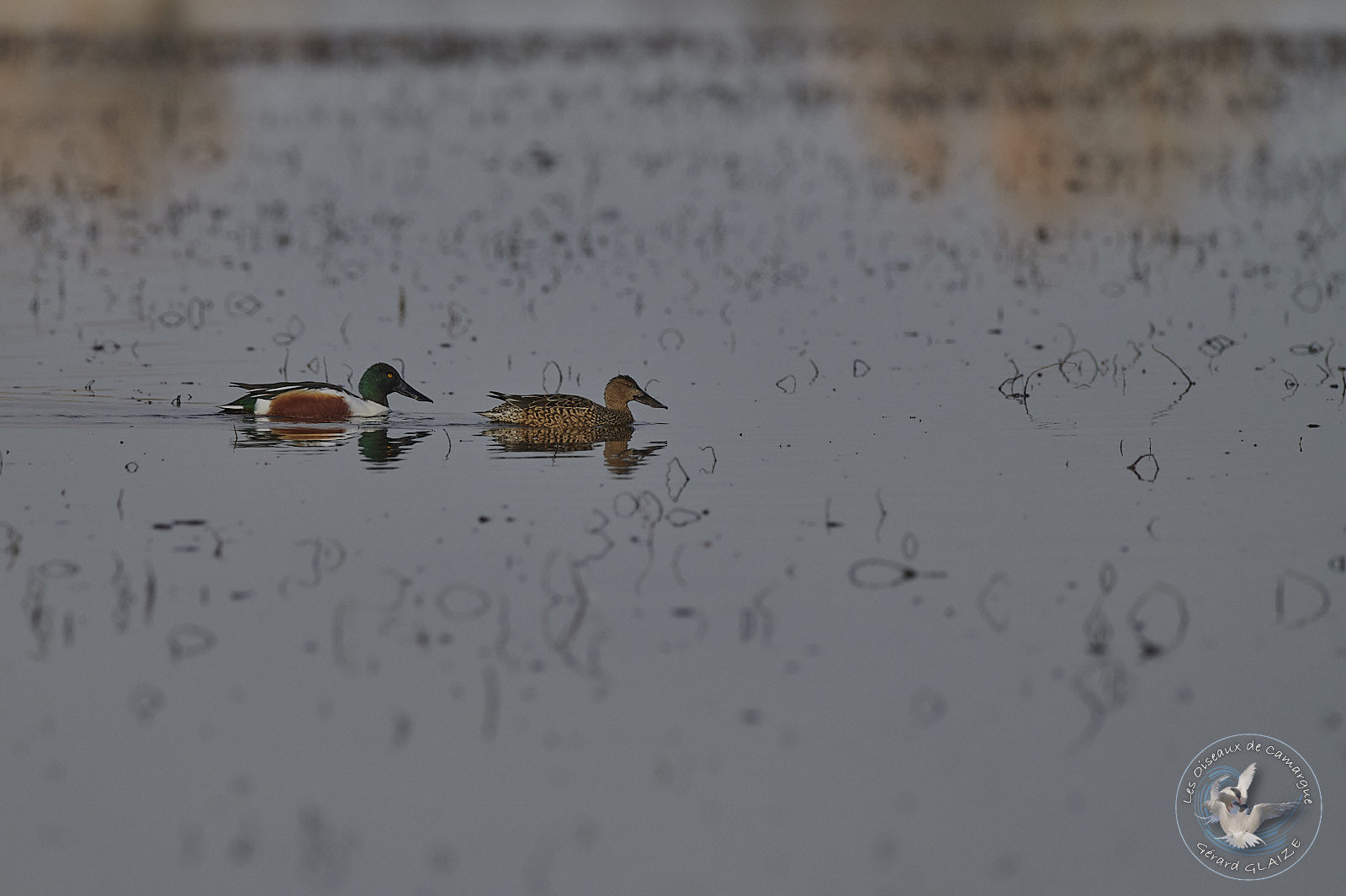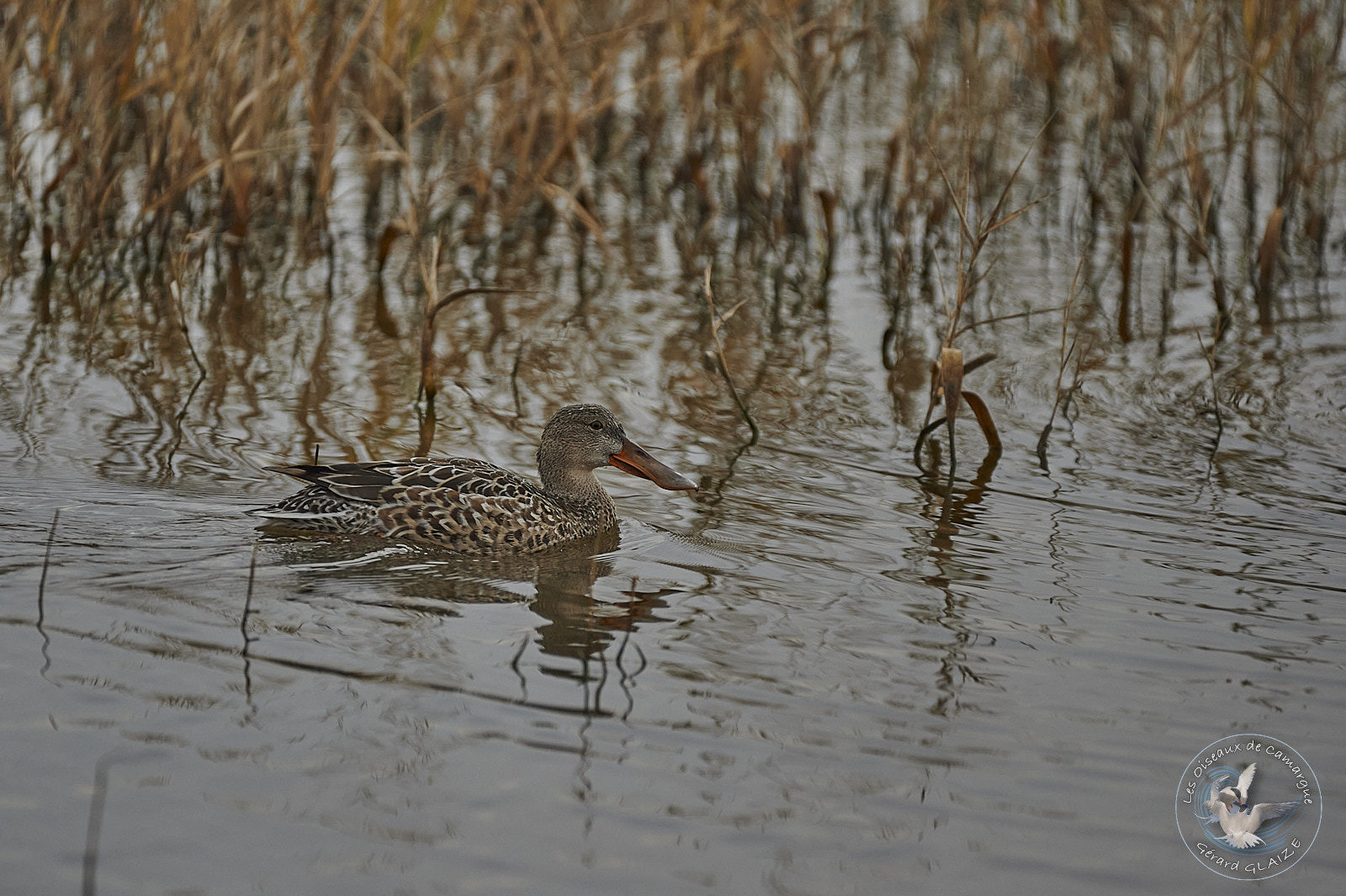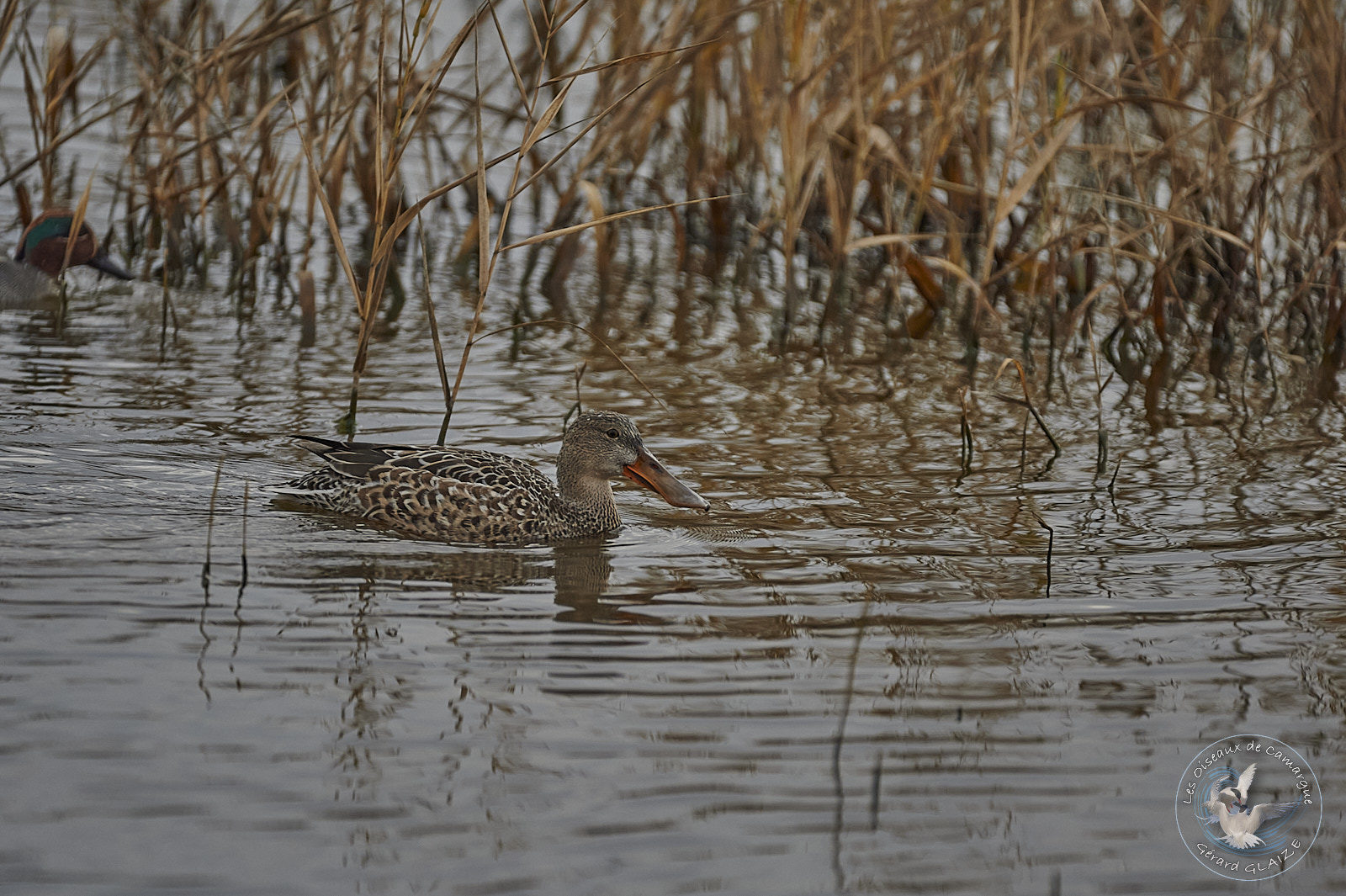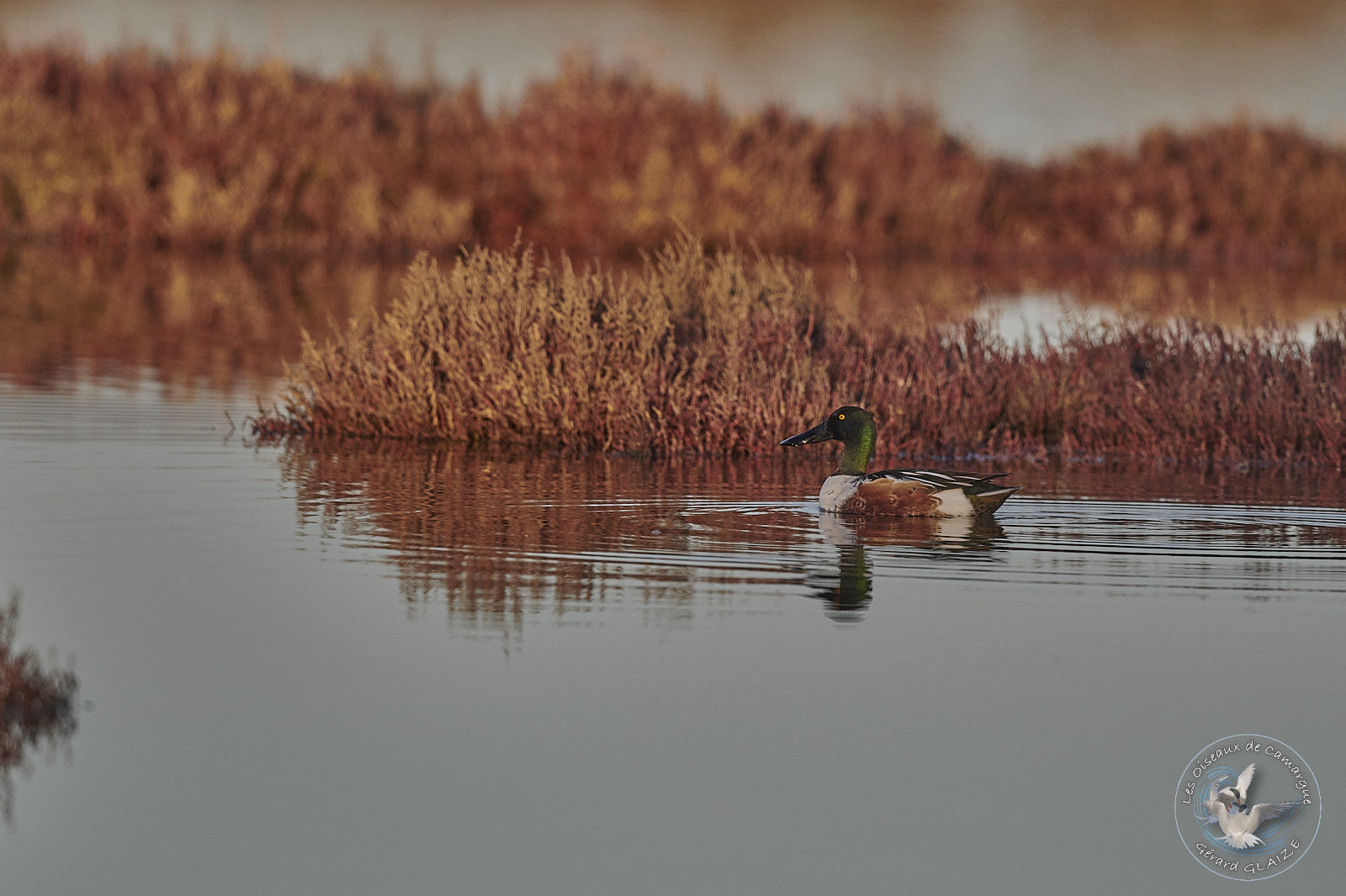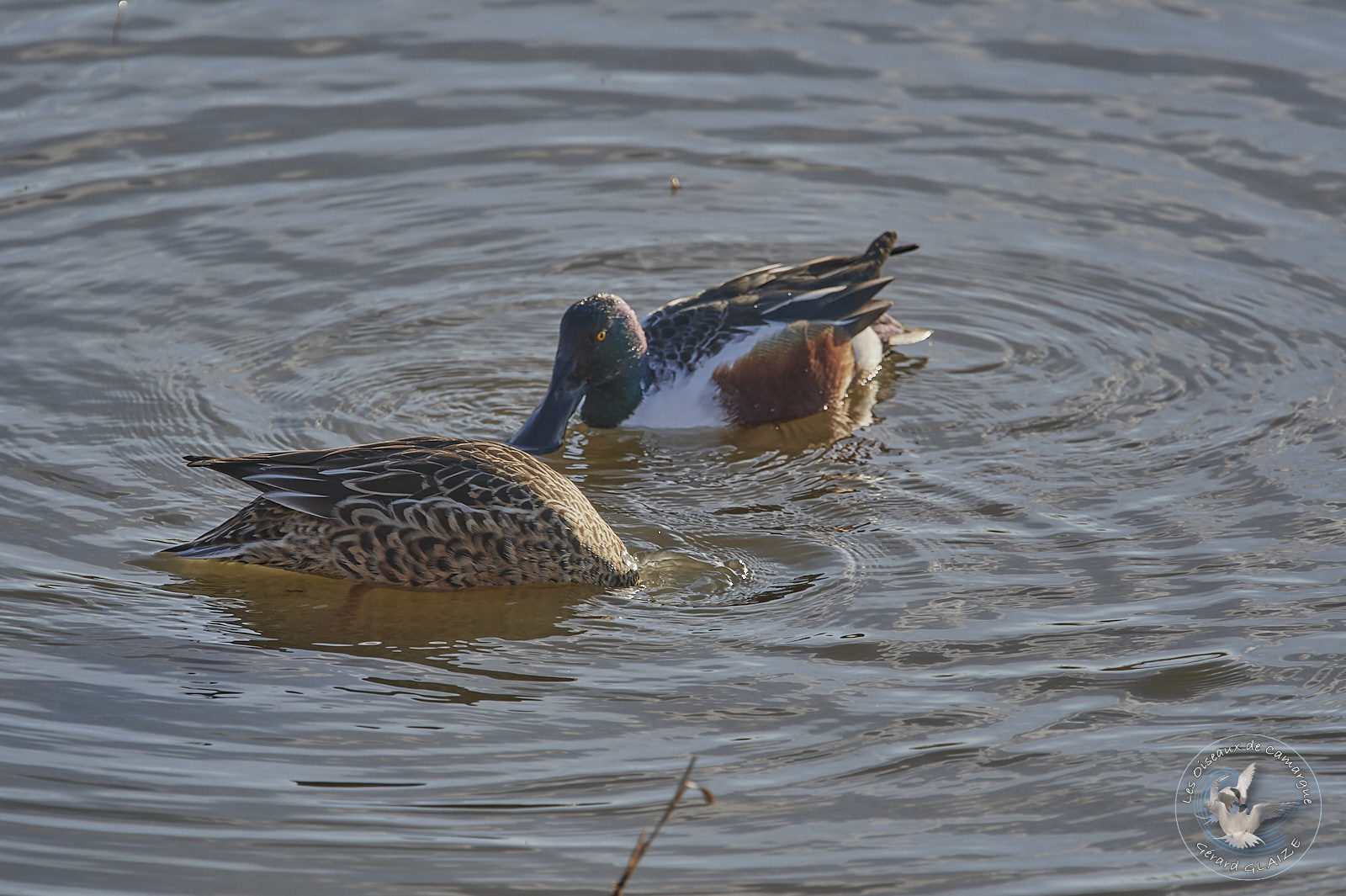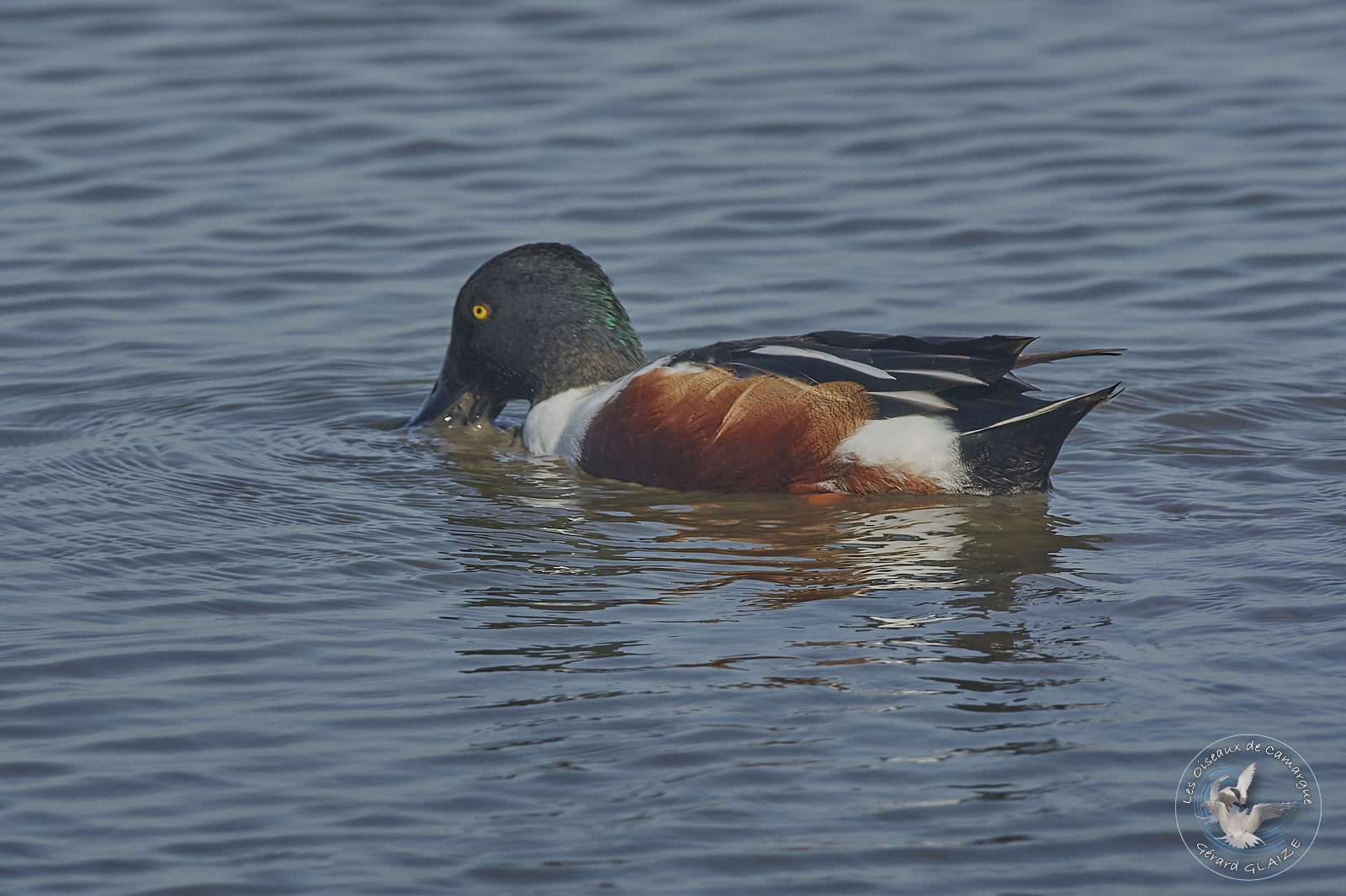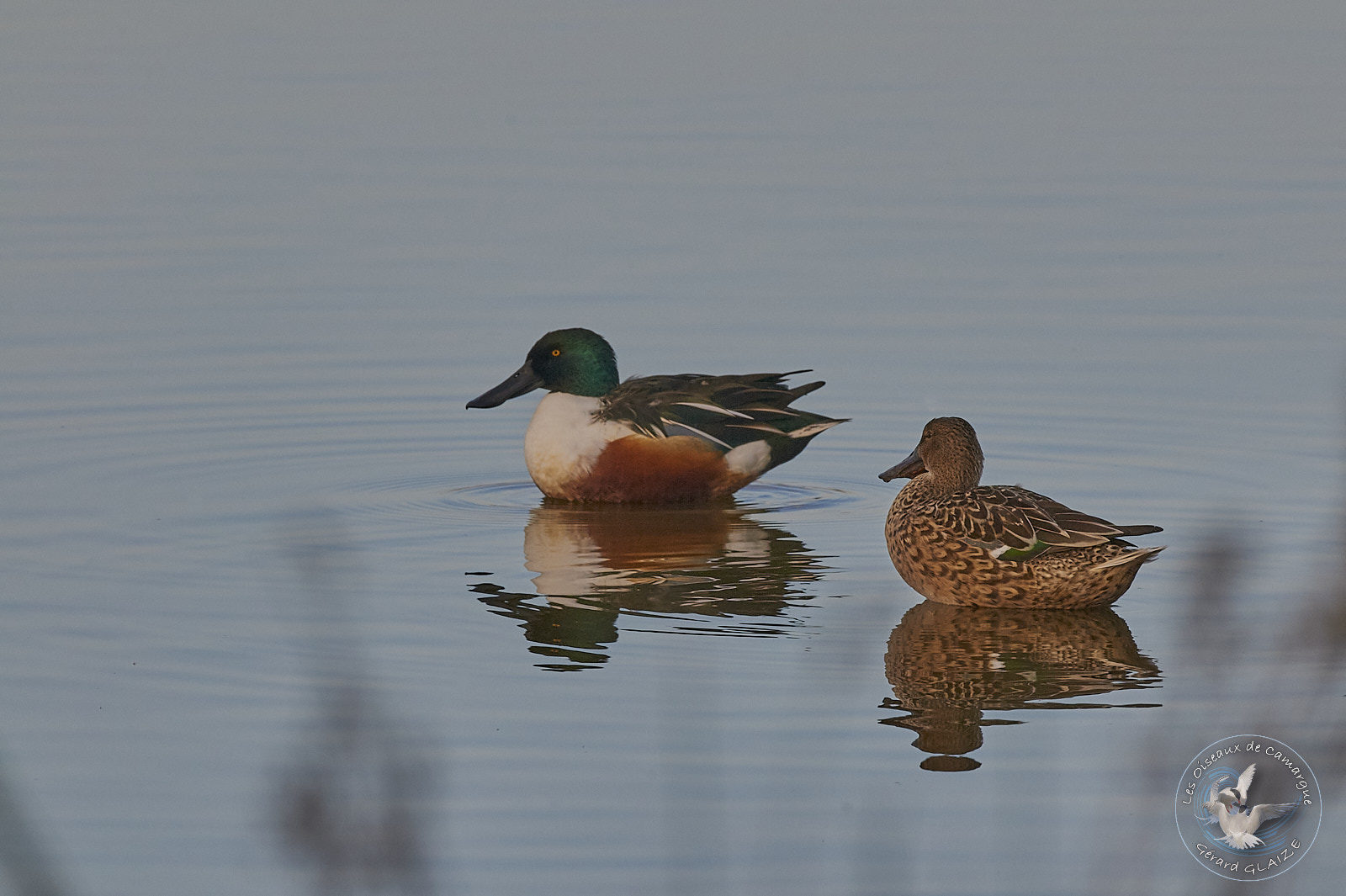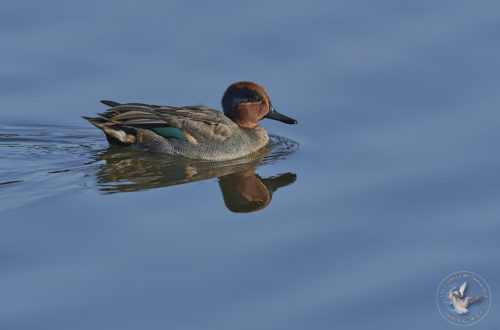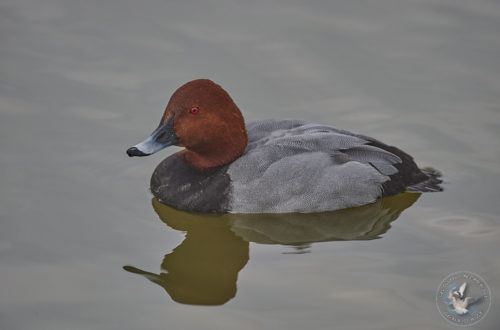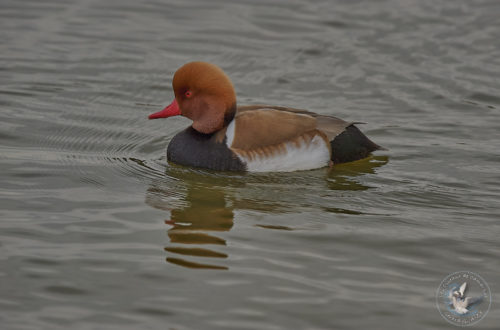Northern Shoveler
Northern Shoveler is a surface dabbling duck. It is characterized by a massive, elongated beak, flattened and widened at its end in the shape of a small spatula. Like the other Anatidae, the species has a sexual dimorphism which results in a particularly colored plumage for the males in the nuptial period which runs from October to June. The legs are red, the head bottle-green and its irises yellow. The female is duller in color. They are calm birds that tolerate human presence.
Northern Shoveler
Scientific name : Anas clypeata
Family : Anatidae
Length: from 44 cm to 52 cm – Wingspan: from 70 cm to 85 cm
Weight : from 470 gr to 1.000 gr for the male
IUCN Conservation Status: LC
Flight
The Northern Shoveler flies with its neck very straight, which gives the impression that the wings are well back from the body.
Habitat
This bird usually frequents the open waters of marshes, lakes, ponds, estuaries, lagoon stations. It particularly likes fresh and slightly brackish water. In winter, he seeks the softness of the sea coasts.
Regime – Diet
The particular shape of its beak allows it to filter the surface of the water, to feed on algae and tiny plants, as well as tiny animals.
Nesting
Pairs form during winter, nesting in vegetation near water. The laying takes place in April-May. The female builds the nest by writhing on the ground and lining it with her own down. She lays 8 to 12 eggs, then incubates them alone for 21 to 23 days. The female is responsible for rearing the young alone. The precocial ducklings will be raised by her for 6 weeks, until they fledge.
Migration
The Northern Shoveler is present in France especially during the winter period, the birds are concentrated at this time on a few sites: the Camargue, the lake of Grand-Lieu, the Loire estuary, the Gulf of Morbihan or even the ponds of Brenne. Some continue their migration to spend the winter in Spain, North Africa or tropical Africa.
Protection
This species is huntable but is protected under the Agreement on the Conservation of African-Eurasian Migratory Waterbirds. In North America, this species is protected under the 1918 American Migratory Birds Convention.
Cry
The Northern Shoveler is silent outside breeding periods. It is only audible in spring, the male by a series of “touk touk” and the female by “gack gack”.
Useful Links
Other Links
- You can see the article from my site “Birds of Camargue” for more information on the Camargue and the Birds.


